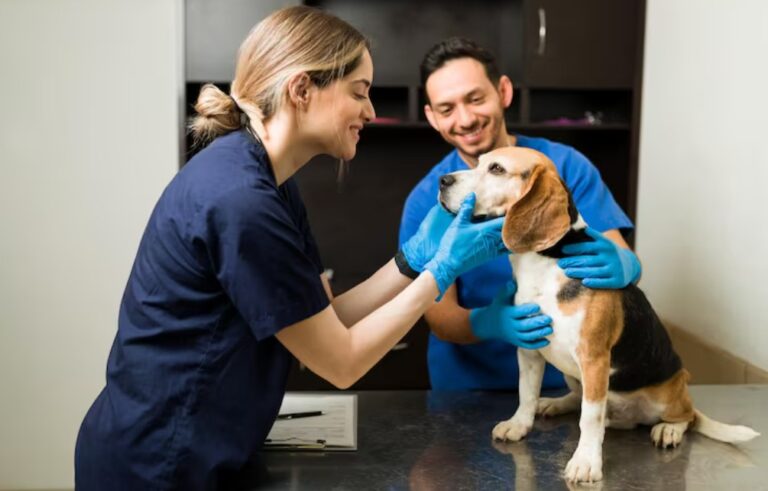
Understanding your dog’s behavior has never been more critical in today’s fast-paced world where pets face numerous challenges from busy schedules to urban environments. Modern technology is revolutionizing how we care for our canine companions, offering unprecedented insights into their daily activities, emotional states, and physical health. As responsible pet owners, staying informed about the latest advancements in dog behavior monitoring can mean the difference between reactive and proactive care.
The landscape of pet care is shifting dramatically with innovative tools that go beyond basic needs. These emerging trends combine cutting-edge technology with behavioral science to create comprehensive solutions that address safety concerns, training challenges, and overall wellness. By embracing these developments, pet owners can detect potential health issues earlier, prevent dangerous situations, and strengthen the bond with their dogs through better understanding. Whether you’re dealing with anxiety issues, training difficulties, or simply want peace of mind about your pet’s whereabouts, keeping pace with these behavioral insights empowers you to provide the highest standard of care your furry friend deserves.
Introduction to Smart Dog Collars
Smart dog collars represent a quantum leap from traditional pet accessories, transforming a simple identification tool into a sophisticated monitoring system. These innovative devices combine multiple sensors, wireless connectivity, and intelligent software to create a comprehensive picture of your dog’s daily life. Unlike conventional collars that serve only as attachment points for tags and leashes, smart collars actively collect and analyze data about your pet’s movements, activities, and even vital signs.
The technology embedded in these collars typically includes accelerometers that track movement patterns, GPS modules for location monitoring, and sometimes additional sensors for temperature and heart rate. This data streams to your smartphone through dedicated applications, providing real-time updates and historical trends. The transformation of this information into actionable insights helps owners understand their pets on a deeper level than ever before.
Modern smart collars have evolved to address specific pain points that pet owners face daily. They answer questions like whether your dog is getting enough exercise, if separation anxiety is affecting their behavior when you’re away, or if unusual activity patterns might signal health concerns. The devices work silently in the background, requiring minimal intervention while continuously gathering valuable information. Battery life has improved significantly, with many models lasting weeks between charges, making them practical for everyday use without constant maintenance. As these devices become more sophisticated, they’re incorporating machine learning algorithms that adapt to individual dogs, recognizing what’s normal for your specific pet and alerting you to meaningful deviations rather than overwhelming you with irrelevant notifications.
GPS Tracking for Enhanced Safety
GPS tracking technology in smart collars addresses one of pet owners’ most fundamental anxieties: knowing where their dog is at any given moment. This feature proves invaluable in countless scenarios, from the dog that slips out an open gate to the adventurous escape artist who finds creative ways to explore beyond boundaries. The GPS module continuously communicates with satellites to pinpoint your dog’s exact location, displaying it on an interactive map within the companion app. This real-time tracking capability means you can locate your pet within minutes rather than spending hours searching neighborhoods or posting lost dog flyers.

The practical applications extend far beyond emergency situations. Virtual boundary features, commonly called geofencing, allow you to establish safe zones around your property or specific areas. When your dog crosses these invisible boundaries, you receive instant notifications on your phone. This proves particularly useful for dogs in yards without physical fencing or for monitoring pets at vacation homes and unfamiliar locations. The system works bidirectionally—you can set up zones you want your dog to stay within or areas you want them to avoid, like a neighbor’s garden or a busy street.
Location history tracking provides another dimension of safety monitoring. By reviewing where your dog has been throughout the day, you can identify patterns or concerning behaviors. Perhaps your dog walker is taking shorter routes than agreed upon, or maybe your pet is spending time in unexpected areas of your property. This historical data creates accountability and helps you understand your dog’s territorial habits. Some advanced systems even calculate the distance traveled, which helps verify that your dog is receiving adequate exercise during walks.
The accuracy of GPS tracking has improved dramatically, with modern systems pinpointing locations within several feet rather than broader ranges. However, effectiveness depends on cellular coverage in your area, as most smart collars use cellular networks to transmit location data to your phone. Urban and suburban environments typically offer excellent tracking performance, while remote rural areas may experience occasional gaps in coverage. Battery consumption varies based on update frequency—you can typically adjust how often the collar reports location, balancing between real-time precision and extended battery life. For most everyday monitoring, updates every few minutes provide sufficient oversight while conserving power for several days of continuous use.
Behavior Insights and Training Assistance
Smart dog collars have evolved into sophisticated behavioral analysis tools that decode the mysteries of canine conduct throughout the day. By monitoring activity patterns, these devices distinguish between different types of movement—walking, running, playing, resting, and even scratching or shaking. This granular data reveals your dog’s daily routine with remarkable precision, showing exactly how much time they spend in various activities. The insights prove particularly valuable for identifying behavioral changes that might otherwise go unnoticed until they become serious problems.
Activity monitoring goes beyond simple step counting to provide context about your dog’s emotional and physical state. Excessive pacing might indicate anxiety or discomfort, while sudden decreases in movement could signal pain or illness. The collar’s sensors detect restlessness during times when your dog should be calm, helping you identify separation anxiety or environmental stressors. Some systems track scratching frequency, which can alert you to potential skin conditions or allergies before they escalate. By establishing a baseline of normal behavior for your individual dog, the technology recognizes deviations that warrant attention, essentially serving as an early warning system for both behavioral and health issues.

Training assistance represents one of the most practical applications of behavior insights. Understanding when your dog is most active helps you schedule training sessions during their peak engagement periods rather than when they’re tired or distracted. The data reveals which times of day your dog exhibits calm behavior versus hyperactivity, allowing you to structure routines that work with their natural rhythms instead of against them. If you’re working on reducing excessive barking or jumping, tracking activity levels before and after implementing training techniques provides objective feedback on what’s actually working.
Sleep quality monitoring offers surprising insights into your dog’s overall well-being. Just like humans, dogs need adequate rest for physical recovery and mental health. Smart collars track sleep duration and quality, identifying disruptions that might stem from discomfort, anxiety, or medical conditions. Dogs that wake frequently during the night might be experiencing pain, digestive issues, or stress that requires addressing. This information proves especially valuable for senior dogs, where changes in sleep patterns often precede more obvious symptoms of aging-related conditions.
The companion apps transform raw data into understandable visualizations and actionable recommendations. Weekly and monthly reports show trends over time, making it easy to spot gradual changes that occur too slowly for daily observation to catch. Many systems provide personalized activity goals based on your dog’s breed, age, and size, helping you ensure they’re getting appropriate exercise levels. When you notice your dog isn’t meeting their activity targets, you can adjust walk durations or add play sessions accordingly. Some advanced platforms even offer training tips and behavioral advice based on the specific patterns they detect in your dog’s data, creating a customized guidance system that evolves with your pet’s needs. This continuous feedback loop empowers owners to make informed decisions about everything from exercise routines to dietary adjustments, ultimately contributing to longer, healthier, and happier lives for their canine companions.
Integration with Pet Care Assistants
Smart dog collars reach their full potential when integrated with comprehensive pet care assistant platforms that centralize all aspects of your dog’s health and wellness management. These digital ecosystems connect the behavioral data from your collar with veterinary records, medication schedules, grooming appointments, and dietary information to create a complete picture of your pet’s care. The integration eliminates the fragmentation that occurs when health information exists in isolated apps and paper records, making it easier to spot connections between different aspects of your dog’s wellbeing.
The synergy between collar data and pet care platforms enables proactive health management that would be impossible with either system alone. When your smart collar detects decreased activity levels, the integrated system can cross-reference this information with medication schedules to determine if a recent prescription change might be affecting your dog’s energy. Similarly, if your dog shows increased restlessness, the platform can check whether it coincides with dietary changes or missed probiotic doses. This interconnected approach helps identify cause-and-effect relationships that might take weeks to recognize through observation alone.
Veterinary communication becomes significantly more efficient when collar data integrates with pet care assistants. Instead of trying to describe your dog’s symptoms or behavioral changes during appointments, you can share concrete data showing activity levels, sleep patterns, and movement trends over days or weeks. This objective information helps veterinarians make more accurate diagnoses and monitor treatment effectiveness between visits. Some platforms allow you to grant temporary access to your veterinarian, enabling them to review your dog’s data remotely and provide guidance without requiring an office visit for minor concerns.
Medication reminders and health tracking features within pet care assistants gain additional context from collar data. If your dog requires daily medication for arthritis, the system can correlate medication timing with activity levels to help you identify the optimal dosing schedule. You might discover your dog is most active in the afternoons, suggesting morning medication provides better pain relief throughout their peak activity period. The platform can also remind you when it’s time for preventive treatments like flea medication or heartworm pills, ensuring nothing falls through the cracks of busy schedules.
Multi-pet households benefit enormously from integrated systems that manage information for several animals simultaneously. The platform distinguishes between different pets’ data while allowing you to view overall household patterns. This proves particularly useful when managing dogs with different needs—perhaps one requires more exercise while another needs restricted activity due to recovery from surgery. The unified dashboard prevents confusion about which dog needs what care while maintaining detailed individual profiles. Platforms like SATELLAI are expanding these integrated capabilities, incorporating features like automatic supply reordering based on usage patterns and community features that connect you with other owners managing similar health conditions, creating a comprehensive support system that extends far beyond simple activity tracking.
Real-Life Benefits and Success Stories
Sarah’s experience with her rescue dog Max illustrates how smart collar technology transforms anxiety management. Max exhibited severe separation anxiety, destroying furniture and injuring himself trying to escape when left alone. After fitting him with a smart collar, Sarah discovered through activity data that his panic episodes peaked within the first fifteen minutes of her departure and again around her typical return time. Armed with this specific timing information, she worked with a trainer to implement desensitization exercises targeting those exact windows. Within six weeks, the collar data showed dramatic reductions in frantic pacing and scratching behaviors, confirming the training’s effectiveness before visible damage to her home decreased.
The GPS tracking feature proved lifesaving for Tom’s athletic Labrador, Bailey, who squeezed through a gap in the fence during a thunderstorm. The loud noise triggered Bailey’s flight response, sending her running in blind panic. Tom received an immediate geofence alert and tracked Bailey’s movement in real-time as she ran nearly two miles from home. Instead of searching randomly, he drove directly to her location using the GPS coordinates, finding her within twenty minutes. Without the collar, Bailey could have remained lost for hours or days in an unfamiliar area, potentially encountering traffic or other dangers.
Health monitoring capabilities caught a serious condition early for retired veterinarian Linda and her senior Golden Retriever, Duke. The collar detected a gradual decline in Duke’s activity levels over three weeks—a change so subtle Linda hadn’t consciously noticed. When she reviewed the data graphs, the downward trend was unmistakable. She immediately scheduled a veterinary appointment, where bloodwork revealed early-stage kidney disease. The veterinarian confirmed that catching the condition at this stage allowed for dietary interventions and medications that significantly slowed progression, likely adding years to Duke’s life. Linda credits the collar’s objective data with providing the early warning her trained eye missed during daily interactions.
Multi-dog household owner Jennifer found unexpected insights managing her three dogs with vastly different energy levels. The collar data revealed that her middle dog, a terrier mix named Pepper, was consistently under-exercised despite group walks with her siblings. While the high-energy Border Collie and the elderly Beagle both met their respective activity targets, Pepper fell short because the walks were either too intense or too gentle for her specific needs. Jennifer adjusted her routine to include separate activities tailored to each dog, and within a month, behavioral problems like excessive barking and destructive chewing that had plagued Pepper completely disappeared. The objective activity metrics removed guesswork from exercise planning, replacing frustration with a structured approach that addressed each dog’s individual requirements and dramatically improved household harmony.
Also Read: How Weather Affects The Choice Of Dog Harness And Leash Sets?
Embracing Technology for Better Pet Care
The evolution of smart dog collar technology represents a fundamental shift in how we understand and care for our canine companions. From GPS tracking that provides peace of mind about your dog’s location to sophisticated behavioral analysis that detects health issues before they become serious, these innovations empower pet owners with unprecedented insights. The integration of collar data with comprehensive pet care platforms creates a holistic management system that transforms reactive responses into proactive strategies, ultimately enhancing both the quality and length of your dog’s life.
Adopting these latest trends in dog behavior insights isn’t merely about embracing technology for its own sake—it’s about making informed decisions based on objective data rather than guesswork. Whether you’re addressing training challenges, managing anxiety, monitoring senior dogs, or simply ensuring your pet receives appropriate exercise, dog fences outdoor wireless and smart collar systems provide the information needed to optimize every aspect of care. As these technologies continue advancing and becoming more accessible, pet owners who stay informed and implement these tools position themselves to provide the highest standard of care their dogs deserve, strengthening the bond between human and canine through deeper understanding and more responsive attention to their needs.








